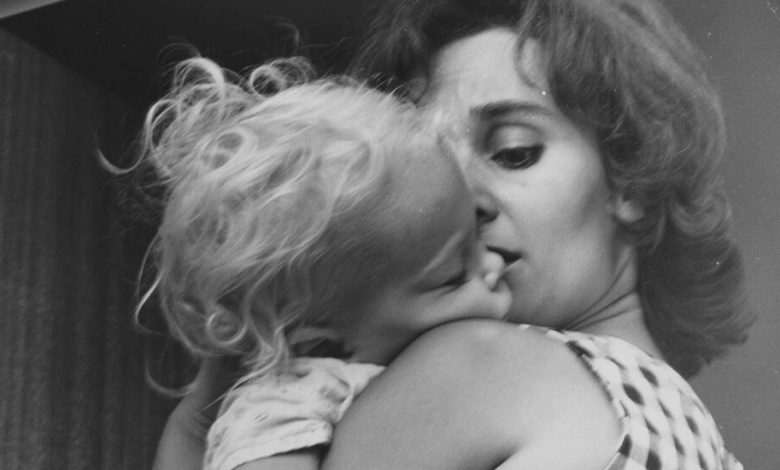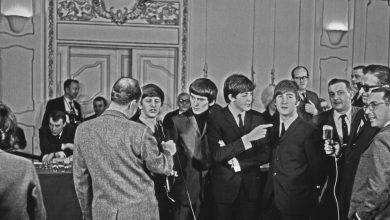A Forgotten Chapter of Abortion History Repeats Itself

Much of the country no doubt watched in amazement last week as a woman with a doomed pregnancy was forced to flee her home state, Texas, to get the abortion her doctors deemed necessary to protect her future ability to bear children. Could this really be happening in the United States in 2023?
But then, should anyone who has followed the recent dystopian course of abortion in America have been surprised? After all, on the other side of the half-century during which abortion was a constitutional right, something eerily similar had happened in an episode that shocked the country when abortion was a subject not discussed in polite society.
It was 1962, and Sherri Chessen Finkbine, a 29-year-old mother of four and host of a popular children’s television program in Phoenix, was pregnant again. Suffering from morning sickness, she tried some pills, marketed in Europe as a sleeping aid, that her husband had brought back from a trip to London. Only after having taken multiple doses did she read about an outbreak in Europe of devastating birth defects in babies born to women who had used a drug called thalidomide. Her doctor confirmed that thalidomide was what she had taken.
The doctor recommended a “therapeutic” abortion and arranged for one to be performed quietly at a Phoenix hospital. Ms. Chessen — the media called her by her husband’s last name, Finkbine, but she had always preferred Chessen — felt obliged to warn other women who might unknowingly be facing the same situation. She talked to The Arizona Republic’s medical editor, who granted her anonymity. But her name became known, and in part because of her prominence — she was “Miss Sherri” of the popular “Romper Room — the story exploded. The hospital declined to go ahead with the scheduled procedure and, with abortion illegal in every state, there was no place in the country she could go.
She and her husband, a public-school teacher, went to Sweden for the abortion. By that time, she was 13 weeks pregnant. When they got back to Phoenix, she lost her job, and her husband was suspended from his teaching post.

Sherri Chessen and her husband traveling for an abortion.Credit…Keystone Press/Alamy Stock Photo
Ms. Chessen’s trauma 61 years ago was even more jarring than Kate Cox’s was this month, because a subject largely hidden from public view was suddenly national news. I still remember, as a 15-year-old, being mesmerized by Life magazine’s extended account that covered not only Ms. Chessen’s experience but the abortion issue itself; included in the coverage were wrenching photographs of surviving “thalidomide babies” missing arms or legs or both.
Her story brought the once forbidden topic into the country’s living rooms in the most sympathetic light imaginable. “Her wholesome image clashed so dramatically with the public’s concept of abortion — the lawless choice of wayward women — that her decision to go through with the procedure sparked a heated national debate,” Jennifer Vanderbes writes in a new book, “Wonder Drug: The Secret History of Thalidomide in America and Its Hidden Victims.”
Although Ms. Chessen received plenty of hate mail, along with condemnation by the Vatican, a Gallup poll found that a majority of Americans thought she had made the right decision. It’s possible to see the episode as a spark that helped ignite the abortion reform movement that culminated in Roe v. Wade 11 years later. “Here is a need for common sense,” The Tulsa Tribune wrote in an editorial.
I first got in touch with Ms. Chessen in 2009, when Reva Siegel, a law professor at Yale, and I were compiling material for a documentary history of how abortion was discussed and debated before the 1973 decision. In an archive at the Schlesinger Library at the Radcliffe Institute for Advanced Study, I found the text of a talk Ms. Chessen gave in 1966 about her experience.
“We tried so desperately to do what was right, yet thousands of people sought to judge for us,” she said in her talk.
Holding the document in my hands, I felt a sense of wonder that such a thing could have happened in my lifetime and relief that it would never happen to another woman. I found a phone number and called Ms. Chessen to get permission to reprint the talk. We included the text in our book, “Before Roe v. Wade.”
Sherri Chessen is now 91 years old. After her abortion, she went on to have a fifth child, a daughter named Kristin Atwell Ford, an award-winning filmmaker who is making a documentary about her mother. In later years, Ms. Chessen wrote and published children’s books. She lives on her own in Southern California. When I called her the other day, it was as if she had been waiting to be asked how she felt about the replay of the long-ago chapter of her long life.
“I’m losing my patience!” she exclaimed. “I have a newfound fire that wants to clobber all those idiots. When will they ever learn?”
Is “never” the inevitable answer? When I talk to student groups and others about the history of abortion, I’m no longer surprised to find how few have ever heard of Sherri Chessen and her flight to Sweden. That is unfortunate, because her story provides essential context for understanding what Texas — its politicians and its judges — did to Kate Cox this month. Those of us who are old enough to remember Sherri Chessen’s story, and who assumed it could never happen again, have now seen it happen, on our watch. If her experience lit a spark in 1962, Kate Cox’s experience should ignite a fire in 2024.
The Times is committed to publishing a diversity of letters to the editor. We’d like to hear what you think about this or any of our articles. Here are some tips. And here’s our email: [email protected].
Follow The New York Times Opinion section on Facebook, Instagram, TikTok, X and Threads.





